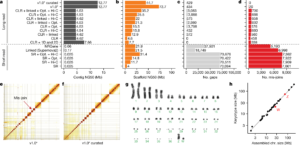Relationships in the business world invariably come with a set of dangers that must be mitigated by means that are thoughtfully put into place. For companies and financial institutions to behave in a manner that is acceptable on a global scale, AML/CFT legislation mandates that customer due diligence procedures be implemented. Companies are required to conduct the method of enhanced due diligence to prevent financial crimes such as money laundering and terrorist financing. This requirement is based on the threat that is linked to a potential customer.
Customer enhanced due diligence in AML is a required procedure, and it entails verifying the identification of the customer to ascertain whether or not the company’s clients are legal organizations. Here are some of the best practices for enhanced due diligence-
1. Use multiple sources
In the absence of an established set of guidelines, you are required to demonstrate that you have made an effort to discover information on the individual by consulting a variety of data sources. For instance, if the customer is trying to transfer a big sum of money, your goal should be to demonstrate that it is within the customer’s means to legally obtain that amount of money and that you have validated the source of such a customer’s finances. You could accomplish this goal in several ways, some of which include demonstrating that they own and operate some enterprises, that they own land, or that they have a position that pays a large salary.
2. Automated compliance with regulatory requirements
In this day and age, when everything can be done with the tap of a finger on a smartphone screen or the press of a button on a computer keyboard, automation should not be reserved just for the benefit of the consumer. Banks and other financial services providers will need to quicken their processing times to keep up with the increasing speed of clients’ money transfers. Unfortunately, this has not been the scenario, as many of us still depend on manual processes that contain a high amount of redundancy as well as a lack of clarity in our information disclosure.
Automated regulatory monitoring for finances is a crucial activity for financial organizations, and it affects financial ratings. Risk management, financial activities, and technology all need to work together as part of a team if the financial services industry is going to achieve the stringent reporting requirements imposed by its regulatory agencies.
As a consequence of incorrect or slow regulatory reporting, financial institutions such as banks, as well as other financial services, run the danger of not complying with anti-money laundering regulations, in addition to incurring fines and suffering reputational harm. Ill-timed monitoring can hold down industry changes, analytics, and growth that are required for customer protection, employee adjustments, and prospective legal changes.
3. Before your estimated due date, there are a few things to think about.
In addition to conducting the standard amount of customer-enhanced due diligence, you must carry out a variety of processes to determine whether or not there is a place for enhanced due diligence. Since an existing customer’s risk profile may evolve into a high-risk one throughout their relationship with the business, this procedure can be an ongoing one. It is preferable to undertake regular due diligence checks on all of the existing consumers so that one may minimize the cumbersome problems that may emerge. Below is a list of considerations that you need to take into account to determine whether or not there is a need for enhanced due diligence (EDD).
- The occupation of the person making the purchase
- The geographical location of the customer
- Varieties of dealings that can be conducted
- Arrangements for payments that are presently anticipated
Conclusion
In a nutshell, improved customer screening is the answer to the problem of dealing with high-risk clients as well as an illegal activity in the financial sector. To achieve precise verification, the procedure necessitates providing information regarding every aspect of the transaction, regardless of how insignificant it may seem.




